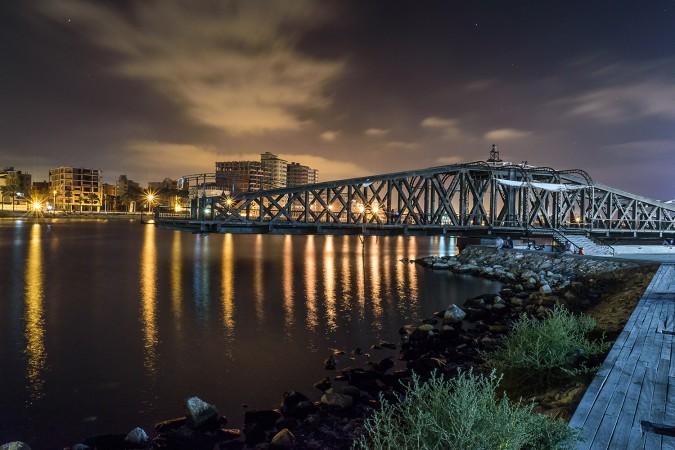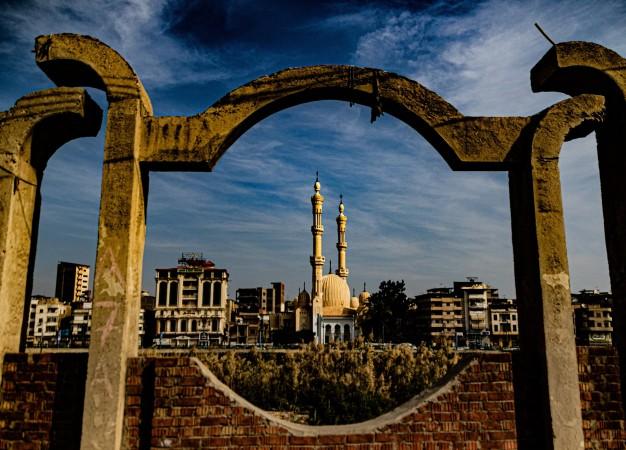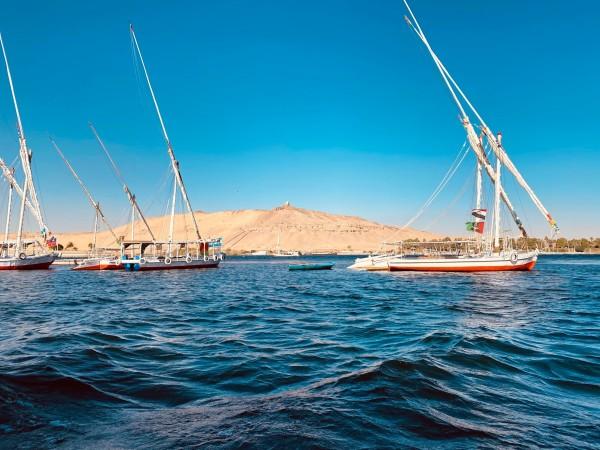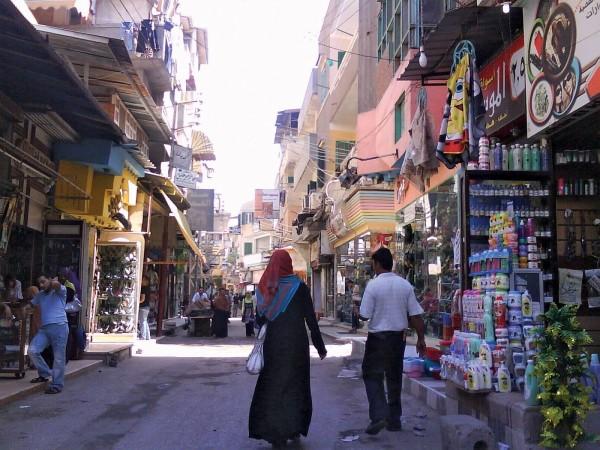Explore Damietta - Egypt Travel, Africa
Nestled on the northern coast of Egypt, Damietta is an underrated yet stunning destination with deep historical roots and a vibrant culture. Known for its picturesque river views, coastal beauty, and renowned furniture craftsmanship, this charming city offers travelers a perfect blend of relaxation and exploration. Whether you're wandering through its historic streets or enjoying a day at Ras El Bar's beaches, Damietta captivates with its unique character. With much to offer, it’s no wonder more and more travelers are discovering the hidden allure of this coastal gem.
Population: Approximately 300,000 in 2021.
Economy: Damietta's economy thrives on furniture manufacturing, agriculture, and fishing, with the city known for its skilled craftsmanship. The port also supports trade, boosting economic activities in the region.
Landmarks: Famous for the Al-Azhar Mosque, The Nile River, and the Ottoman Fort.
Egypt

Overview of Damietta
History & Cultural Influence
Damietta has seen centuries of history unfold along the banks of the Nile. As one of Egypt’s ancient cities, it played a significant role in trade, especially during the Pharaonic and Roman periods. This coastal town was an important port, acting as a gateway between Egypt and the Mediterranean. Throughout its history, Damietta has been influenced by various civilizations—each leaving its mark on the city’s architecture, traditions, and way of life. Today, you can still see traces of its historical past in its grand mosques, Ottoman-era buildings, and traditional marketplaces. The fusion of ancient and modern influences gives Damietta its unique charm, making it a fascinating place for travelers interested in history and culture.
Interaction with the Locals
The city's citizens are noted for their warm friendliness and strong adherence to tradition. The city's citizens are noted for their warm friendliness and strong adherence to tradition. Most citizens work in agriculture, fishing, and the renowned furniture industry, which has brought global recognition to Damietta. The locals maintain a rich cultural heritage, blending modern life with long-standing customs, making the city both vibrant and culturally unique. Their friendly nature makes it easy for tourists to feel welcome and experience authentic Egyptian hospitality.

Damietta at night - © Ayman Muhammad
Top Attractions in Damietta
Al-Azhar Mosque
Al-Azhar Mosque is one of Damietta’s most significant landmarks, embodying centuries of Islamic heritage. Built during the Islamic golden age, this mosque stands out for its stunning architecture, featuring intricately designed domes, tall minarets, and beautiful geometric patterns. Visitors can admire its artistic details while learning about the religious and cultural importance it holds within the community. Non-Muslim visitors should remember to dress modestly when entering, and women are often required to cover their heads.
The Nile River & Damietta Branch
One of the most peaceful experiences in Damietta is walking or cruising along the banks of the Nile’s Damietta branch. This branch of the famous Nile River gently winds through the city, offering serene views and a tranquil environment. Take a leisurely boat ride to escape the bustle of the city and enjoy the calm waters, passing by local fishermen and lush greenery. The Corniche, a popular promenade that runs along the river, is a favorite spot for locals to gather in the evening. It’s a perfect place to unwind, watch the boats, and take in the city’s scenic beauty.
Ottoman Fort
Perched near the banks of the Nile, the Ottoman Fort is a historic relic that speaks to Damietta’s strategic importance during various military campaigns. Built during the Ottoman Empire, this fortress once protected the city from invaders and acted as a military stronghold. Today, visitors can explore its weathered walls and imagine the battles fought here centuries ago. The fort also offers panoramic views of the surrounding area, making it a great spot for photography. A visit to the fort provides a deep dive into Damietta’s military history and its role in defending Egypt’s northern frontiers.

Al-Azhar Mosque - © Michael Starkie
Must-Try Dishes in Damietta
Damietta is a haven for food lovers, especially those seeking authentic Egyptian flavors. Known for its fresh seafood and unique local dishes, the city’s cuisine is a blend of coastal ingredients and traditional Egyptian cooking methods.
- Feseekh: Feseekh is a traditional Egyptian dish, particularly popular during the Sham El-Nessim festival. This fermented and salted fish, made from mullet, is an acquired taste but a must-try for adventurous eaters seeking local flavors. It’s often eaten with fresh bread and lemon to balance its strong taste.
- Shrimp Sayadiya: Being a coastal city, Damietta offers excellent seafood, and Shrimp Sayadiya is one of the most popular dishes. This hearty dish consists of shrimp cooked with rice, onions, and spices in a rich tomato sauce. It’s a comforting, flavorful meal that captures the essence of Damietta’s cuisine.
- Bouri Fish: Bouri, a type of mullet, is a Damietta specialty. Freshly caught from the Mediterranean Sea or the Nile River, the fish is usually grilled or fried and served with rice, salad, and tahini sauce. Its mild flavor and tender texture make it a favorite among locals and visitors alike.
- Kebda Iskandarani: For those looking to try something beyond seafood, Kebda Iskandarani (Alexandrian liver) is a popular street food item in Damietta. This spiced beef liver dish is stir-fried with onions, garlic, and chili, creating a flavorful and aromatic meal. It’s usually served with fresh Egyptian bread.
- Damietta Sweets: Damietta is also known for its delicious sweets, particularly Roz Bel Laban (rice pudding) and Basbousa (a semolina cake soaked in syrup). These desserts provide a sweet end to any meal and are loved by both locals and tourists.

Feseekh - © Cairo Scene
Festivals & Local Celebrations
Damietta is a city that appreciates its traditions, and festivals are a great way to honor its rich cultural and religious heritage. The people enjoy celebrating with vivid festivals, which provide travelers a look into the city's distinctive traditions.
Sham El-Nessim
Sham El-Nessim is one of Egypt's most prominent festivities, honoring the beginning of spring. In Damietta, families gather by the Nile and enjoy a traditional meal of feseekh (fermented fish), onions, and eggs. It's a time of joy, with picnics, music, and outdoor activities. Travelers visiting during this time can join in the festive spirit and witness how locals honor ancient Egyptian customs.
Moulid of Sayyid Al-Badawi
Damietta also celebrates religious festivals like the Moulid of Sayyid Al-Badawi, commemorating the birth of a revered Islamic saint. The city becomes a hub of religious devotion and festivity, with processions, prayers, and local markets springing up around mosques. Visitors can observe the unique blend of spirituality and celebration that characterizes Islamic festivals in Egypt.
National Furniture Festival
Damietta’s famed craftsmanship is celebrated in the National Furniture Festival, an annual event showcasing the city’s iconic furniture-making industry. Visitors can see the best examples of local craftsmanship, attend live workshops, and purchase beautiful, handcrafted furniture.
What to Do in Damietta
- Boat Rides on the Nile: A peaceful boat ride along the Nile’s Damietta branch offers a different perspective of the city. You’ll sail past historic landmarks, see local fishermen at work, and enjoy serene views of the riverbanks. It’s a relaxing way to experience the city and its connection to the Nile.
- Explore Damietta’s Historic Markets: The city’s traditional markets, or souks, are a must-see for visitors looking to immerse themselves in the local culture. These marketplaces are thriving, selling everything from artisan furniture to fresh food, spices, and textiles. Make sure to visit the Souk Al-Attarine, which is famed for its fragrances and spices.
- Beach Day at Ras El Bar: For those looking for some sun and sand, Ras El Bar is the perfect destination. Spend a day lounging on the beach, swimming in the Mediterranean, or enjoying local seafood at one of the beachfront cafes. It's a refreshing escape from the city and a great way to experience Damietta’s coastal charm.
- Visit the Furniture Workshops: For a more hands-on experience, visitors can tour the local furniture workshops where artisans craft Damietta’s famous woodworks. It’s a unique opportunity to learn about the city’s famed industry and even try your hand at making small items like wooden souvenirs.
Shopping in Damietta
- Traditional Souvenir Stores: In the bustling souks, visitors can find traditional Egyptian souvenirs such as perfumes, spices, jewelry, and textiles. The Souk Al-Khawas is particularly popular for its selection of handcrafted items, including pottery and glassware. Bargaining is prevalent, so expect to haggle for a good offer.
- Local Markets: For an authentic experience, visit Damietta’s local food markets, where you can find fresh produce, seafood, and local specialties like dates, honey, and sweets. These markets give a glimpse into the daily life of Damietta’s residents and are perfect for picking up fresh ingredients or snacks for your journey.

Boat Rides on the Nile - © Mo Gabrail
Weather in Damietta: Best Time to Visit
Damietta enjoys a Mediterranean climate, making it an ideal destination for travelers throughout the year. However, different seasons offer unique experiences, and understanding the weather will help you plan your visit.
Spring in Damietta
Spring in Damietta is pleasant, with temperatures ranging between 18°C to 25°C (64°F to 77°F). This season is perfect for outdoor activities like exploring the markets or enjoying a Nile boat ride. The Sham El-Nessim festival, celebrated in April, adds a festive atmosphere to the city, with locals gathering for picnics along the riverbanks.
Summer in Damietta
Summers can get hot, with temperatures often reaching 30°C to 35°C (86°F to 95°F). Despite the heat, the coastal breezes from the Mediterranean help keep Ras El Bar cooler, making it a popular summer retreat for beachgoers. Stay hydrated and take breaks indoors during the warmest hours of the day.
Autumn in Damietta
Autumn offers milder weather, with temperatures dropping to between 22°C and 28°C (72°F to 82°F). It’s an excellent time to explore Damietta’s outdoor attractions, visit the markets, and enjoy sightseeing without the intense summer heat.
Winter in Damietta
Damietta has pleasant winters with temperatures usually around 12°C to 18°C (54°F to 64°F). Rainfall is more common during this season, but it’s usually light. Winter is still a good time to visit, especially for those who prefer cooler weather, and the city remains lively throughout the year.

Explore the streets of Damietta - © Britannica
Essential Travel Information
Getting Around Damietta
- Taxis: Taxis are a common way to get around Damietta, and they are relatively affordable. Make sure to negotiate the fare before starting the ride, as taxis don’t always have meters. Taxi drivers are usually friendly, but knowing a few Arabic phrases will make communication smoother.
- Public Buses: Public buses are available, connecting various parts of the city and surrounding areas. Buses are the most economical option, but they can be crowded, especially during peak hours. If you’re looking for an authentic experience of daily Egyptian life, taking the bus is an interesting option.
- Ride-Sharing Apps: Ride-sharing apps like Uber and Careem operate in major Egyptian cities, including Damietta. They offer a convenient and safer alternative to taxis, with pre-set fares and a user-friendly experience for international travelers.
- Boat Rides: Given its location by the Nile and Mediterranean, Damietta offers boat rides as a scenic way to get around. You can take boat taxis along the Nile or even rent a small boat for a private tour of the waterways.
- Walking: The city’s compact size makes walking a pleasant way to explore local markets, neighborhoods, and the Corniche along the Nile. Walking allows you to soak in the local atmosphere and interact with residents at a leisurely pace.
ATM & Banking Services
Damietta offers convenient access to ATMs and banking services throughout the city, especially in popular tourist areas and near hotels. Most ATMs accept international cards like Visa and MasterCard, making it easy for travelers to withdraw cash. Currency exchange services are available at authorized exchange offices, providing fair rates for foreign currency. While credit cards are accepted in larger establishments, smaller shops and local markets often prefer cash, so it’s advisable to carry Egyptian pounds for small purchases.
Where to Stay in Damietta
- Luxury Hotels: For those seeking a premium experience, Damietta has upscale hotels that provide modern amenities such as spacious rooms, on-site dining, fitness centers, and scenic views of the Nile or the Mediterranean. These accommodations often include extra services like pools and spa treatments, making them perfect for a relaxing getaway.
- Mid-Range Hotels: Mid-range options offer comfort and affordability, providing essential services like Wi-Fi, air conditioning, and complimentary breakfast. These hotels are often conveniently located near popular attractions and the city center, offering good value for travelers who want both comfort and convenience.
- Budget Lodgings: For travelers on a budget, there are smaller guesthouses and economical hotels that offer basic amenities at affordable prices. These options provide a more local experience, with simple accommodations that are perfect for those who value cost-effective travel without sacrificing cleanliness or comfort.
Articles for you

Explore Yala National Park - Sri Lanka Travel, Asia
Tucked away in Sri Lanka’s southeastern corner, Yala National Park is where wild nature meets deep tradition. Known worldwide for its leopard population, the park is also home to elephants, sloth bears, crocodiles, and hundreds of bird species. Beyond wildlife, Yala opens doors to a cultural landscape dotted with ancient temples, Buddhist ruins, and coastal villages. For travelers seeking more than just a safari, Yala offers a chance to explore eco-tourism, local communities, and sacred heritage sites.
Population: The Yala National Park area doesn’t have a human population.
Economy: The economy around Yala National Park thrives on a blend of eco-tourism, agriculture, and local services. Safari tours, eco-lodges, and cultural experiences drive steady income for nearby towns like Tissamaharama and Kataragama, supporting thousands of families.
Landmarks: Famous for Block I of Yala and wildlife encounters, including elephants, sloth bears, crocodiles, and exotic bird species.

Explore Galle - Sri Lanka Travel, Asia
Nestled on Sri Lanka’s southern coastline, Galle is a vibrant city where history meets the sea. Its cobbled streets, colonial architecture, and serene beaches make it a must-visit destination for travelers seeking a blend of culture, adventure, and relaxation. A UNESCO World Heritage site, Galle captivates visitors with its Dutch Fort, bustling markets, and friendly locals. Whether you’re exploring the ramparts at sunset or savoring fresh seafood by the shore, Galle promises an unforgettable journey into Sri Lanka’s heritage.
Population: Approximately 113,000 in 2023.
Economy: Galle’s economy thrives on tourism, trade, and fisheries. The city’s historic fort, colonial architecture, and coastal charm draw thousands of international visitors each year, making tourism its main economic driver. Fishing remains vital for local livelihoods, supplying fresh seafood across the region.
Landmarks: Famous for the Galle Fort, Dutch Reformed Church & Maritime Museum, and Unawatuna Beach.

Explore Bentota - Sri Lanka Travel, Asia
Nestled along Sri Lanka’s southwestern coast, Bentota is a tropical paradise that blends golden beaches, vibrant culture, and thrilling adventures. Famous for its calm waters, luxury resorts, and scenic river estuary, Bentota has become a top destination for travelers seeking both relaxation and authentic experiences. From serene beach walks at sunrise to adrenaline-pumping water sports, this coastal town offers a perfect balance of leisure and exploration. With its proximity to Colombo and Galle, Bentota is easy to reach, making it an ideal stop for both short escapes and extended holidays.
Population: Approximately 37,000 in 2023.
Economy: Bentota’s economy thrives mainly on tourism, which drives local businesses such as hotels, restaurants, and wellness retreats. The town also benefits from fishing, coconut cultivation, and handicrafts like wood carving and batik textiles. Many residents rely on the growing demand for water sports and Ayurvedic treatments, making tourism the backbone of both income and employment in the area.
Landmarks: Famous for Bentota Beach, Bentota River Safari, and Kande Vihara Temple.

Explore Mirissa - Sri Lanka Travel, Asia
Mirissa is a charming coastal town on Sri Lanka’s southern shoreline. Known for its golden beaches, turquoise waters, and vibrant marine life, it has become a must-visit stop for travelers exploring the island. Many come for whale watching, surfing, and sunset views at Coconut Tree Hill, but Mirissa offers much more than postcard beauty. The fishing boats you see anchored by the bay carry generations of stories. Local traditions, delicious cuisine, and a laid-back rhythm of life shape every visitor’s experience.
Population: Approximately 4,700 in 2023.
Economy: Mirissa’s economy is largely shaped by its coastal location. Fishing has long been the backbone of local livelihoods, with generations relying on the Indian Ocean for income. In recent decades, tourism has become the main driver of growth, thanks to whale watching, surfing, and beachside hospitality.
Landmarks: Famous for Mirissa Beach, Coconut Tree Hill, and Parrot Rock Bridge.

Explore Nuwara Eliya - Sri Lanka Travel, Asia
Tucked away in the Central Highlands of Sri Lanka, Nuwara Eliya is often called “Little England”. With its rolling tea plantations, cool misty mornings, and colonial charm, this mountain town feels like a step into another world. Travelers come here to breathe fresh air, walk through flower gardens, sip the finest Ceylon Tea, and enjoy a pace of life far from the island’s busy cities. Whether you’re drawn by scenic landscapes, heritage architecture, or the warmth of its people, Nuwara Eliya is a destination that blends nature, culture, and history in perfect harmony.
Population: Approximately 781,000 in 2023.
Economy: Nuwara Eliya’s economy thrives mainly on tea production, as it sits in the heart of Sri Lanka’s central highlands, famous worldwide for Ceylon Tea. The city also benefits from a growing tourism industry, attracting visitors with its colonial charm, cool climate, and scenic landscapes.
Landmarks: Famous for Gregory Lake, Hakgala Botanical Garden, and Victoria Park.

Explore Sukau - Malaysia Travel, Asia
Nestled on the banks of the Kinabatangan River in Sabah, Malaysian Borneo, Sukau is a destination where wildlife, culture, and conservation come together. Known as one of Asia’s top spots for river safaris and eco-tourism, this quiet village offers a front-row seat to encounters with Bornean orangutans, pygmy elephants, proboscis monkeys, and exotic birdlife.
Population: Approximately 1,400 in 2019.
Economy: Sukau’s economy is shaped by its riverine location and natural resources. Traditionally, the Orang Sungai community relied on fishing, small-scale farming, and forest gathering for their livelihood. Today, the village has shifted toward eco-tourism, with river cruises, jungle trekking, and homestays providing income.
Landmarks: Famous for the Kinabatangan River cruises, Gomantong Caves, and Ox-bow lakes and wetlands.
